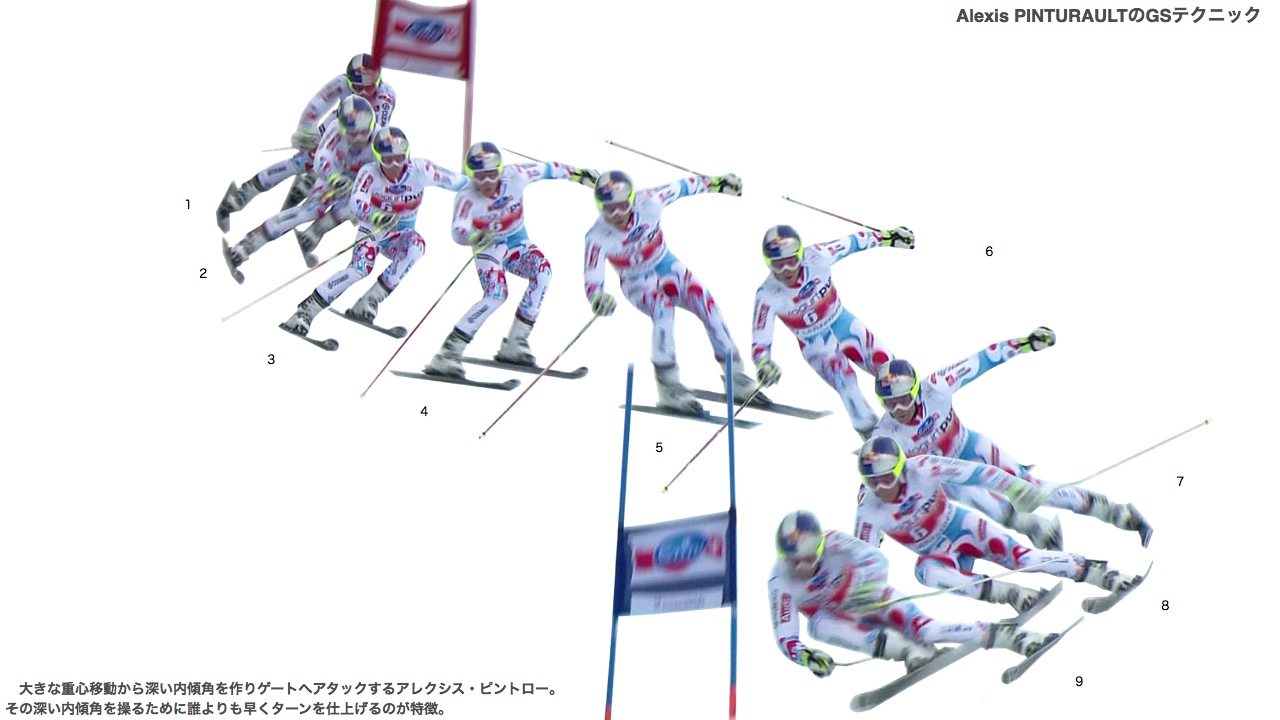This has been said many times before, but please be careful extrapolating one photo, or series of photos in montage, of World Cup skiers going around a gate as the definitive fundamental technique. In the photos cited, Pinturault chooses to use a Whitepass turn (keeping weight on the old outside ski until after he is heading downhill) as a tactic to set himself up for the next gate. If you watch other video of him, he chooses to flex to release and establish grip on the new outside ski before, or just starting, downhill. I would venture to say that this is generally accepted (at this time) as the most efficient and effective technique to start most turns (subject to change depending on terrain or intent). If you look at the video below, starting at 3:14, you will see a good illustration of this in action. It's always ideal to have different arrows in the quiver to adapt technique as needed in a given circumstance, but the adaptation probably shouldn't be the default.

 tiski.exblog.jp
tiski.exblog.jp




 Where’s that coach from Europe who was on here last season?
Where’s that coach from Europe who was on here last season?